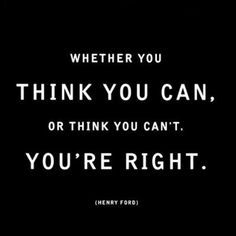Change.
That word. That scary word that drives some of us to build a fort with couch cushions and hide there forever. But is it what you need to take your performance to the next level?
Firstly, you need to be clear on what it is that you want to change, what is holding you back and why.
Is it your diet? Have you been procrastinating about seeing a personal trainer? Do you need to quit smoking? Is it all just a little overwhelming?!
Well, pinch yourself really hard. Did that hurt? Good, it’s a reminder that you’re still human.
These points should also remind you:
- People arrive at different stages of readiness for change;
- People need help to make change more sustainable;
- Relapse is what normal people do;
- People don’t lack the resources, they lack the motivation.
Assess Your Readiness
This is where it gets a little technical. Research shows that people who successfully change their behaviour go through a series of stages and they can go through this cycle three to four times, before reaching their ultimate goal. The Transtheoretical Model of Behavior Change was discovered by a Professor in Psychology and he was one of the most influential authors in Psychology in the U.S.
Reference: http://www.prochange.com/staff/james_prochaska.
What happens in vagueness, stays in vagueness.
Recognising where you are in the cycle will help you take the actions necessary to move forward:
Stage 1 – Precontemplation: You have no intention of changing your behaviour and deny having a problem. Friends and family may recognise the problem before you do.
Stage 2 – Contemplation: You have acknowledged a problem and you are starting to think seriously about solving it. In this stage, you may have vague plans to make changes, however, you are not ready to take action yet. Remember, what happens in vagueness, stays in vagueness.
Stage 3 – Preparation: You are planning to take action in the near future, however, you may not have resolved your ambivalence and you are still assessing whether it’s the right decision. An important step during this stage is to make your intention public.
Stage 4 – Action: This is where you have made the modifications to your behaviour and the surroundings to support the goal you wanted to achieve. At this stage, it is important to realise that while your actions will be more noticeable to others, it is not the only stage during which you can make progress toward overcoming your problem.
Stage 5 – Maintenance: This stage is an ongoing and critical process. Consolidate the gains you have made but remain alert and work to prevent relapses.
Stage 6 – Termination: This stage is reaching your ultimate goal. No further effort is needed and you will exit the cycle of change.
Reference: http://www.takingcharge.csh.umn.edu/activities/stages-readiness-change
Help – I Need Somebody
If you’re not that experienced in facilitating your own change, there are many resources available to us these days. The internet, word of mouth and a large range of health practitioners. Don’t underestimate the wealth of knowledge and contacts your current professionals may have to help you achieve your health and performance goals.
https://healthengine.com.au/findapractitioner.php
http://www.physioadvisor.com.au/find-a-physio/
How do I get this thing called motivation?
You could start by putting your pen to paper. By writing down what you want to achieve, it may trigger some ideas around your goal and help you to plan some realistic steps to achieve it. Here are a couple of example forms that can help:
http://www.nutrition411.com/content/change-motivation-worksheet
https://infolink.ti.com/ext/health/livehealthy/docs/Getting_Motivated.pdf
Pay attention to your language
As soon as you put the words “I can’t” or “I don’t” into a sentence, you are already turning it into a negative. If you focus on what you ‘can’ do, then you’re already pushing yourself in the right direction.
Remember:
















